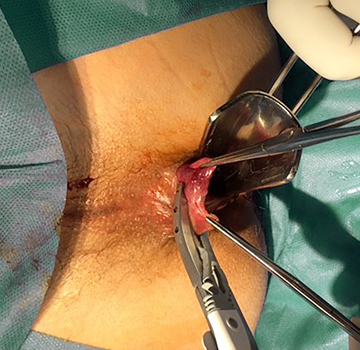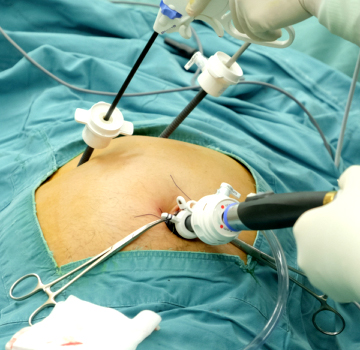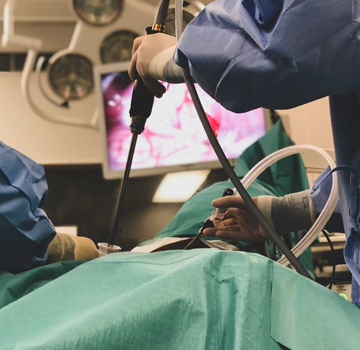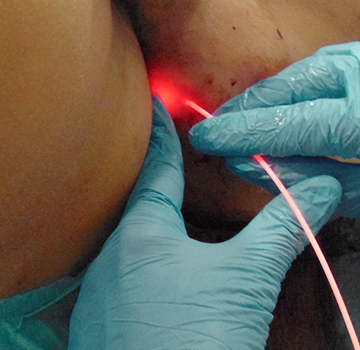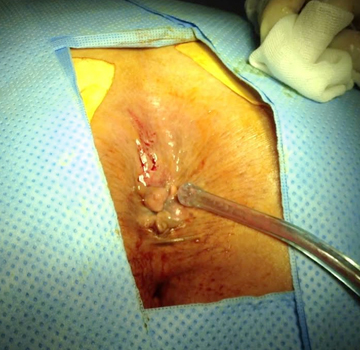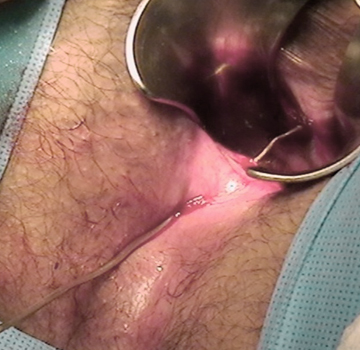Colon and Rectal
Surgery
Hemorrhoids
They are varicose veins in the veins of the anus (hemorrhoidal veins).
How do I know if I have them?
They usually manifest one or several of these symptoms: Painless bleeding when defecating, pain or discomfort both when defecating and even when walking or sitting, itching, inflammation and irritation in the perianal area, the appearance of a lump near the anus.
Hemorrhoidectomy is an ambulatory surgical procedure in which the existing hemorrhoidal contours are removed. This procedure can be performed under local anesthesia, which makes it a safe, effective and definitive surgery.
Diverticula
They are small bags that bulge in the colon or large intestine. If you have these pouches, you have a condition called diverticula. When one or more of these pouches becomes inflamed or infected, the disorder is called diverticulitis.
Symptoms: Pain that can be constant and persistent for several days, Pain is usually felt in the lower left part of the abdomen, Nausea and vomiting, fever, abdominal tenderness, constipation or less frequently, diarrhea.
Mild cases can be treated with antibiotics. Surgery is reserved for patients with recurrent diverticulitis, complications, or severe attacks when there is little or no response to medication. Surgery is also required in people with a single major bleed due to diverticulosis, or with recurrent bleeds.
Colon tumors
It starts in the large intestine (colon) or rectum (end of the colon). Other types of tumors can affect the colon. These include lymphoma, carcinoid tumors, melanoma, and sarcomas. These are uncommon.
Symptoms: Abdominal pain and tenderness in the lower abdomen, blood in the stool, diarrhea, constipation or other changes in bowel movements, thin stools, weight loss for no known reason. It will depend on the stage of the disease, but in general it consists of surgery to remove the affected area of the colon.
Anal fissure
It is a cut in the inner part of the rectum (anal canal) that causes pain during bowel movements. Anal fissures are a common problem that affects people of all ages.
Surgical treatment includes removal of a small part of the anal sphincter, which eliminates pain and improves the healing process. This procedure is, like all surgeries, associated with some potential risks.
Anal abscesses
An abscess is a pus-filled cavity that is very painful in the region of the anus. Abscesses are secondary to infection of the crypts or mucus glands in the anus and may result in fistula formation.
The treatment of the abscess should be to let the pus out (drain the abscess), after this intervention the pain disappears almost entirely as the pressure caused by the pus is reduced. Physical examination demonstrates local swelling, red, tender, hard, or fluctuating skin.
On other occasions, purulent discharge is seen from the anus if the abscess is draining through the internal os, located in the anal canal.
Anal fistulas
The fistula is the consequence of blocking the outlet of one of the anal glands, so that first an abscess is formed that ends up breaking the skin of the perianal area, establishing an abnormal connection with the internal surface of the anal canal and through which it can be bequeathed to produce the output of feces. They do not cause pain, except in cases where the abscess that originates it is ecurrent, but they do cause irritation or itching due to the pus they exude.
Surgery is usually necessary to treat an anal fistula.
Surgery for colon and rectum
Laparoscopic surgery allows more detailed procedures to be performed with results similar to long-term open surgery. However, it has been shown that recovery after surgery is faster, there is less risk of infection and less pain.

